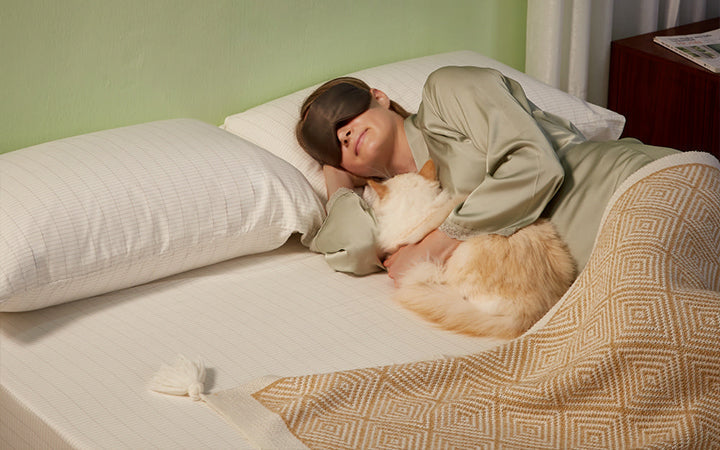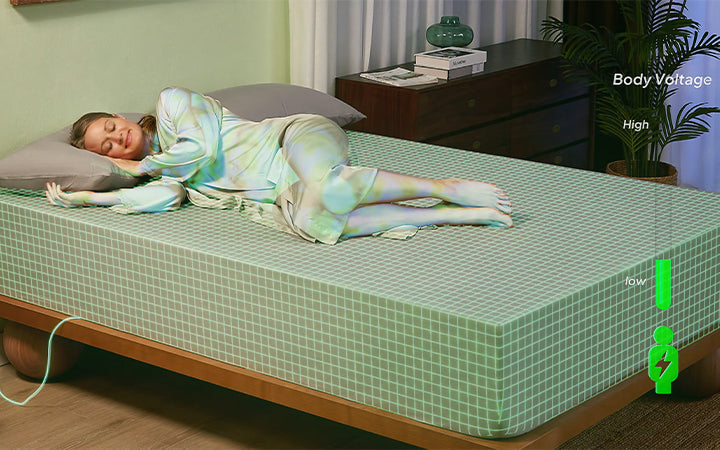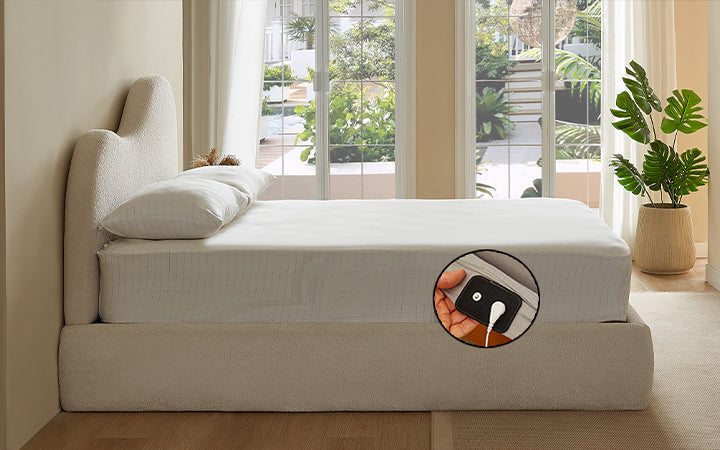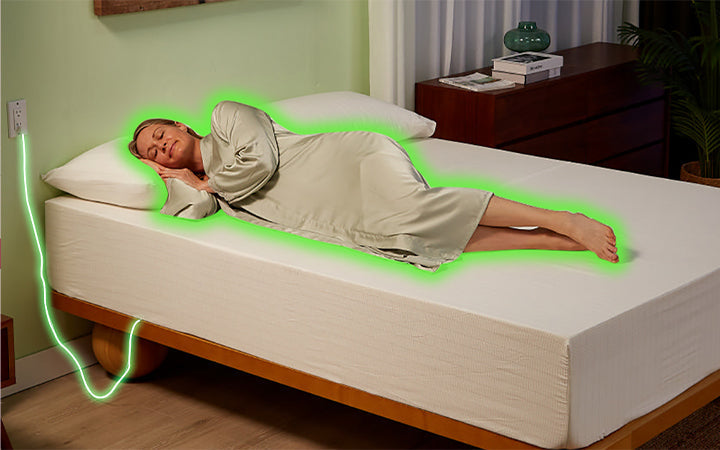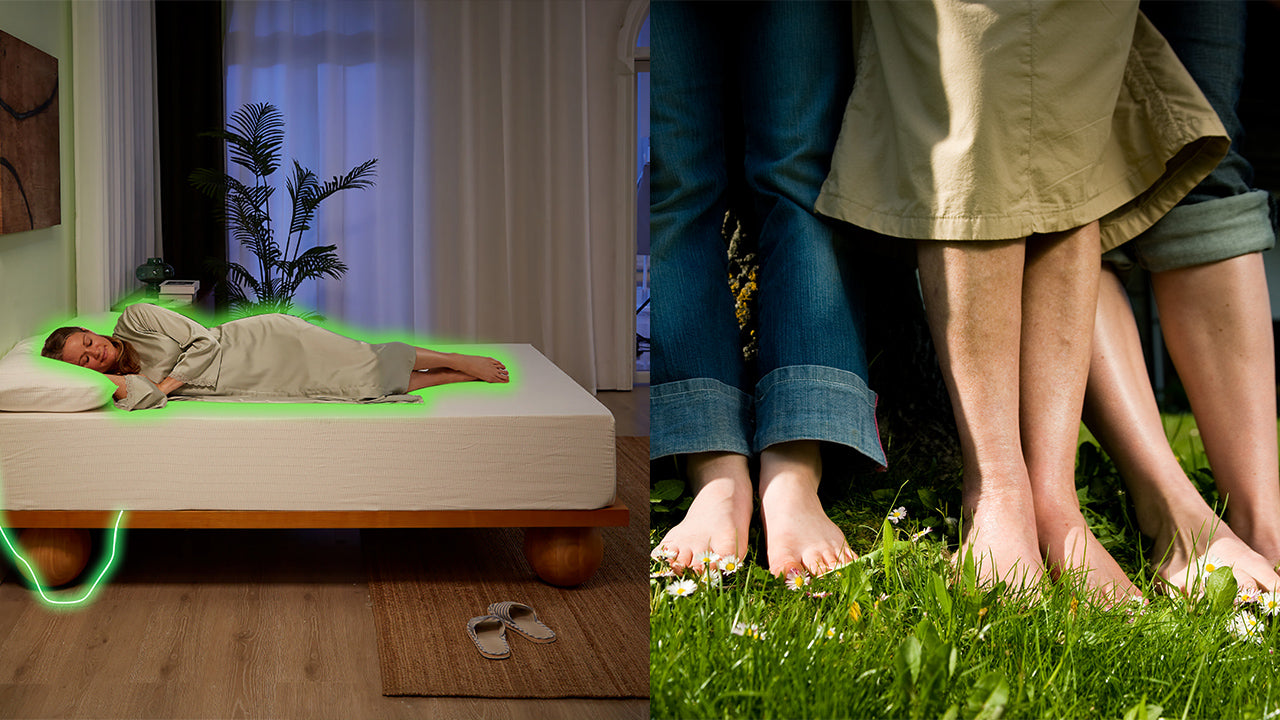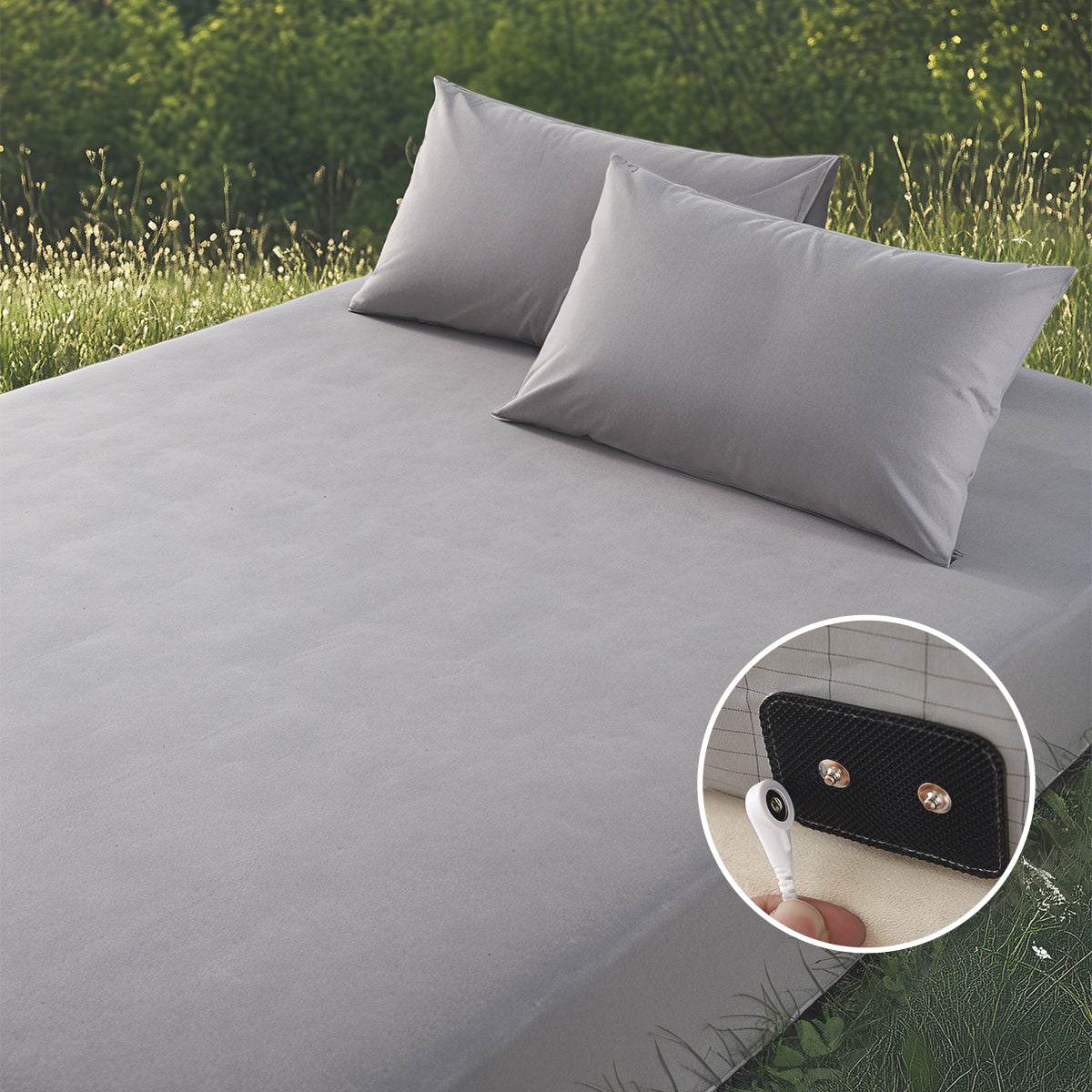Are Grounding Sheets Safe? The Ultimate Safety Guide
With any product that plugs into your home's electrical system, safety questions are bound to arise. Grounding sheets connect you to the Earth's electrical charge through your outlet's ground port, but how do they protect against electrical shock or other hazards? This guide examines the key safety features built into quality grounding sheets, explains why proper outlet grounding matters, and covers best practices for safe use. Whether you're concerned about electrical risks, "dirty electricity," or material safety, we'll address the most common safety questions to help you use grounding sheets with confidence.

How Grounding Sheets Connect to the Earth
To understand their safety, it first helps to know how grounding sheets are designed to work. The basic idea is to connect your body to the Earth's natural electrical charge while you're indoors.
The Sheet and Cord System
Grounding sheets, or mats, are made with conductive materials, often silver or carbon threads, woven into a fabric like cotton or polyester. This creates a conductive surface. A cord then snaps onto the sheet and acts as a bridge to a ground source. The material composition of grounding sheets directly impacts their effectiveness, with silver-infused fabrics typically providing superior conductivity compared to carbon-based materials.

Two Ways to Connect: Outlets and Grounding Rods
The way this cord connects to the Earth is vital for both safety and effectiveness. There are generally two methods:
- Using the Ground Port of an Electrical Outlet: Modern homes usually have three-prong outlets. Two slots deliver power, and the third, round or D-shaped hole is the ground port. This port connects to a ground wire in your home's electrical system, designed to safely carry away fault currents (like if an appliance shorts out). Grounding sheets are made to plug only into this ground port, not the ones that supply electricity.
- Using an External Grounding Rod: If your home's outlets aren't reliably grounded, you can use a grounding rod. This is a metal rod driven into the ground outside, and the sheet's cord connects directly to it. This creates a direct earth connection, separate from your house wiring.
Both methods aim to connect you to the Earth's potential. The method chosen often comes down to your home's wiring.

Are Grounding Sheets Safe?
Yes, grounding sheets are made to be safe for usage provided they are premium products utilized correctly with a properly grounded house electrical system. As follows describes several important elements that cooperate to provide this safety.
1. Proper Outlets Provide Secure Earth Connection
Safety of grounding sheets starts with the electrical system of your house. Using an outlet tester is a critical initial step for both safety and effective grounding since it guarantees a safe path to the Earth and helps your sheet to link to a properly connected and grounded outlet.
2. Built-in Resistors Prevent Electrical Shock
Usually around 100kΩ, a built-in resistor is a primary safety precaution in grounding sheet cord. In the case of an electrical fault, this essential part limits electrical current to a safe, undetectable level, therefore preventing shock and guaranteeing a strong connection to Earth.
3. Earth Connection Avoids Household Electrical Fields
One can reasonably be concerned about domestic electric fields, sometimes known as "dirty electricity". Your sheet uses a properly grounded connection, meant to link you to the natural ground of Earth, not to expose you to stray household electrical fields, therefore addressing these issues.
Why Checking Your Outlet's Ground Is Essential
An outlet that is properly grounded allows the sheet to connect you to the Earth as intended. It also means that your home's electrical safety features, and the resistor in the grounding cord we just discussed, can do their jobs.
Risks from Ungrounded or Faulty Outlets
There are a couple of problems with using an outlet that isn't properly grounded or is wired incorrectly:
- No Grounding Benefit: The sheet simply won't provide any grounding effect.
- Potential (Rare) Hazard: In very specific and uncommon fault situations (like a live wire wrongly connected to the outlet's ground pin – a serious wiring error in itself), a faulty outlet could pose a risk. The sheet’s resistor is designed to protect against this, but a correctly wired outlet is the first line of defense.
How to Check if Your Outlet is Grounded
Given its importance, you should always check your outlet before using a grounding sheet with it.
- Outlet Tester: The easiest way is with an outlet tester, a small, inexpensive device from a hardware store. You plug it in, and lights will show if the outlet is grounded and wired correctly.
- Electrician: If you're unsure, especially in an older home, or if a tester shows a problem, it's best to have a qualified electrician check your wiring.
The Grounding Rod: A Direct Earth Alternative
If your outlets aren't grounded, or if you prefer a separate connection, an external grounding rod system is the recommended alternative. This bypasses your home's wiring entirely.
Other Safety Concerns About Grounding Sheets
Apart from the direct electrical connection, some other subjects occasionally arise about the usage of grounding sheets.
- Concerns about "Dirty Electricity" (HFVTs): "Dirty electricity" describes high-frequency fluctuations in your power lines. Some worry whether grounding sheets might bring these into the body. Grounding seeks to match your body's electrical potential to the Earth's, therefore reducing the voltage of your body relative to your surrounding electrical environment. The discussion on the health consequences of "dirty electricity's" interaction with grounding is still under progress. Your house's correctly grounded electrical system is always a great starting point.
- Electromagnetic Fields (EMFs): Grounding mostly lowers your body's electric voltage by tying you to the Earth; it usually has no effect on your magnetic field exposure from wire. In settings with obvious electric fields, some find that lowering their body voltage feels better.
- Lightning Strike Risk: This is legitimate cause for worry. Very strong is lightning. It's prudent to disconnect your grounding sheet during such conditions, much as you would avoid using electronics or barefoot standing outside during a thunderstorm. Although the resistor in the cord provides some surge protection, a direct lightning strike is too strong for a component this small.
- Material Safety and Allergies: Grounding sheets are usually made of cotton or polyester with silver or carbon for conductivity. These are common materials, so allergic reactions are rare. However, if you have specific sensitivities, like to silver, check the product details or ask the manufacturer. Reputable brands often use hypoallergenic base fabrics.
- Fire Hazard Potential: The risk here is quite low. Grounding sheets don't take power like an electric blanket. They connect to the ground port, and the safety resistor inhibits large current flow that could cause heating.
Best Practices for Grounding Sheet Safety and Efficacy
To use your grounding sheet safely and get the most out of it, follow these practical tips:
- Always Test Your Outlet First: Before plugging in your sheet, use an outlet tester to confirm the outlet is properly grounded. This is a crucial first step. If it's not grounded or shows a fault, don't use it for the sheet.
- Choose Reputable Brands: Look for products from companies that are clear about their materials and safety features, especially the inclusion of a ~100kΩ resistor in the cord.
- Inspect Your Product Regularly: Check the cord, connections, and sheet fabric for wear or damage. If anything looks damaged, stop using it and contact the manufacturer. Regular cleaning of your grounding sheet helps you spot potential damage while maintaining optimal conductivity.
- Follow Manufacturer's Instructions: Pay attention to their advice for setup, use, and especially washing, as this can affect conductivity and hygiene.
- Consider a Grounding Rod if Outlets are Ungrounded: If your home's outlets aren't suitable, proper installation of an external grounding rod is a reliable option.
- Avoid DIY Solutions Without Electrical Knowledge: Commercial products have specific safety designs. Trying to make your own grounding device without understanding electrical safety can be risky.
- Pay Attention to Your Body: While issues are uncommon, if you feel anything unusual or uncomfortable, stop using the sheet and double-check your setup and ground connection.
Following these guidelines will help you use grounding sheets as they are intended.
Use Grounding Sheets Safely and With Confidence!
All things considered, grounding sheets are usually safe when used properly—with a confirmed ground connection and products including the required safety resistor. They give a means of indoor connection with the energy of the Earth. Most users claim no issues and usually feel they gain from them. Ensuring a positive experience mostly depends on using a careful and knowledgeable approach.
Not sure where to start? → Try this grounding guide for beginners.
